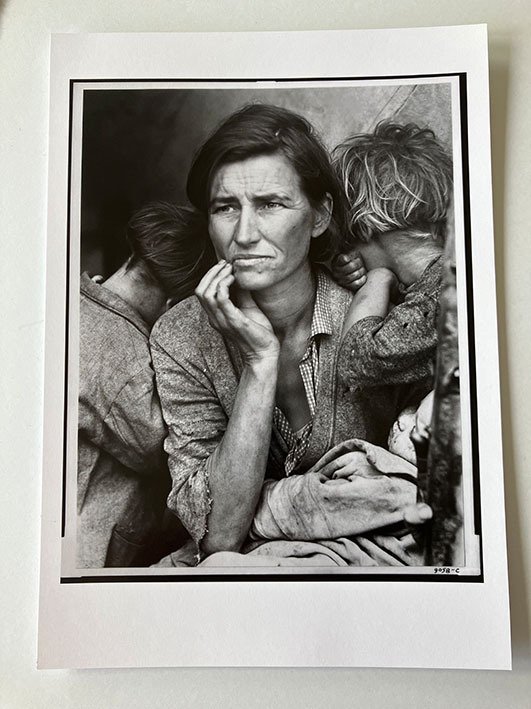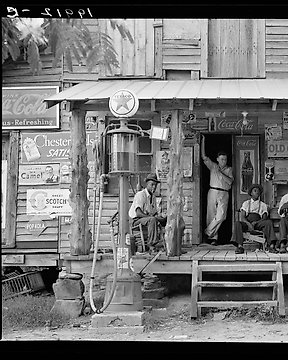excellent printing, accurate and fast shipping
Vertaling bekijkendorothea lang (May 26, 1895 – October 11, 1965) - migrant mother
Nr. 85483693



dorothea lange May 26, 1895 – October 11, 1965) - migrant mother
Digitale afdruk - Galerie postzegel - 12/15 - 2023
Roy Struyker liet de duim weg retoucheren, deze foto is een afdruk van het originele negatief, dus met duim.
Roy Stryker called Migrant Mother the “ultimate” photo of the Depression Era.
Migrant Mother is a photograph taken in 1936 in Nipomo, California by American photographer Dorothea Lange[1] during her spell at the Resettlement Administration (later the Farm Security Administration).[2] Since then, the photograph has become an icon of the Great Depression and because it is in the public domain, it has been reproduced to serve as advertisements and much more. Today, Lange's work is considered to be a part of the classic canon of American art and international.
The mother is the focal point of this photograph as she is the only person in the photograph without an obscured face. This was intentional as Lange instructed the two children to turn their backs to the camera and rest their hands on their mother's shoulders. By doing so, Lange was able to eliminate any possibility of unwanted effects from exchanges and competing countenances. Thus, the viewer's attention is immediately drawn towards the mother's anxious face rather than her children. Unlike the six (one of which was not included in the original sequence) other photographs Lange took that day, Migrant Mother's frame is much more focused on the mother and children as the frame does not allow any room for the background to be shown. In fact, the only parts of the photograph that are shown are above the mother's and children's head.[3]
dorothea lange May 26, 1895 – October 11, 1965) - migrant mother
Digitale afdruk - Galerie postzegel - 12/15 - 2023
Roy Struyker liet de duim weg retoucheren, deze foto is een afdruk van het originele negatief, dus met duim.
Roy Stryker called Migrant Mother the “ultimate” photo of the Depression Era.
Migrant Mother is a photograph taken in 1936 in Nipomo, California by American photographer Dorothea Lange[1] during her spell at the Resettlement Administration (later the Farm Security Administration).[2] Since then, the photograph has become an icon of the Great Depression and because it is in the public domain, it has been reproduced to serve as advertisements and much more. Today, Lange's work is considered to be a part of the classic canon of American art and international.
The mother is the focal point of this photograph as she is the only person in the photograph without an obscured face. This was intentional as Lange instructed the two children to turn their backs to the camera and rest their hands on their mother's shoulders. By doing so, Lange was able to eliminate any possibility of unwanted effects from exchanges and competing countenances. Thus, the viewer's attention is immediately drawn towards the mother's anxious face rather than her children. Unlike the six (one of which was not included in the original sequence) other photographs Lange took that day, Migrant Mother's frame is much more focused on the mother and children as the frame does not allow any room for the background to be shown. In fact, the only parts of the photograph that are shown are above the mother's and children's head.[3]
- 1
- 0
- 0
- 1
- 0
- 0
excellent printing, accurate and fast shipping
Vertaling bekijken








